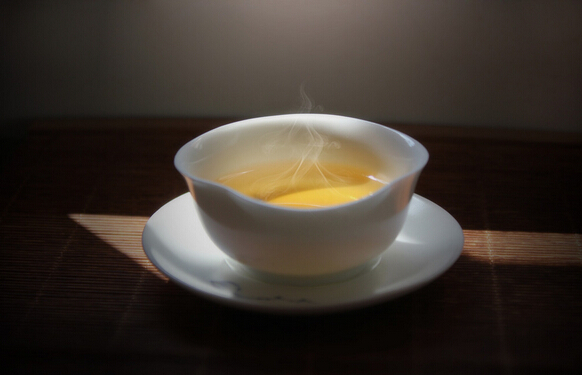Raw Pu-erh and Ripe Pu-erh are not just separated by the pile-fermentation process. They differ greatly in appearance, taste, and effects. Let’s explore these differences below.

Distinct Differences in Appearance
Raw Pu-erh tea cakes are primarily green or dark green, with some turning yellowish-red, while white parts indicate buds.
Ripe Pu-erh tea cakes are black or reddish-brown, with some buds appearing dark golden. They carry a strong pile-fermentation aroma, resembling a musty smell. Light fermentation yields a longan-like scent, while heavy fermentation results in a damp straw mat odor.
Notable Differences in Taste
Raw Pu-erh has a robust, intense flavor with a pronounced tea essence. The tea broth is fresh and fragrant, bitter yet astringent.
High-quality tea should turn bitterness into sweetness and astringency into salivation. If the bitterness lingers, the tea is likely of poor quality or not genuine Pu-erh. Raw Pu-erh offers a refreshing aftertaste and a smooth, mellow entrance.
Ripe Pu-erh is thick, sweet, and barely bitter (except for semi-fermented varieties). It carries a fermentation scent and a slight watery note. Poor-quality Ripe Pu-erh has a strong fermented or off-putting odor, which fades over time. The taste may feel dry without a noticeable sweet aftertaste.
Differences in Liquor Color and Leaves
What defines Raw Pu-erh? Vigor! After brewing, the leaves remain soft, fresh, and elastic, exuding vitality. Even aged antique teas retain their energy and natural charm. The liquor is clear, bright, and transparent.
Ripe Pu-erh is different. The brewed leaves appear dry, dark, and lack youthful vitality. Over-fermented or artificially aged tea may have moldy, ragged leaves. Inferior Ripe Pu-erh yields a dull, murky, or even blackened liquor.
Varied Health Benefits
Raw Pu-erh is rich in tea polyphenols, making it an excellent anti-cancer beverage. It invigorates the mind and cleanses the body, with noticeable benefits for blood circulation. However, excessive consumption may harm the stomach.
Ripe Pu-erh is renowned for weight loss. Lightly fermented, it contains beneficial bacteria and is gentle on the stomach, making it ideal for women. According to traditional Chinese medicine, Ripe Pu-erh is warming and nourishing.
Different Production Processes
Raw Pu-erh involves withering, rolling, and sun-drying fresh leaves to produce loose tea or sun-dried mao cha. The mao cha is then steamed, pressed into shapes (cakes, bricks, or tuos), and dried again.
Ripe Pu-erh starts similarly with sun-dried mao cha, which then undergoes accelerated fermentation via the pile-fermentation process. This technique was perfected by Kunming Tea Factory in 1973. Before this, Ripe Pu-erh did not exist. The fermented loose tea is steamed and pressed into compact forms.